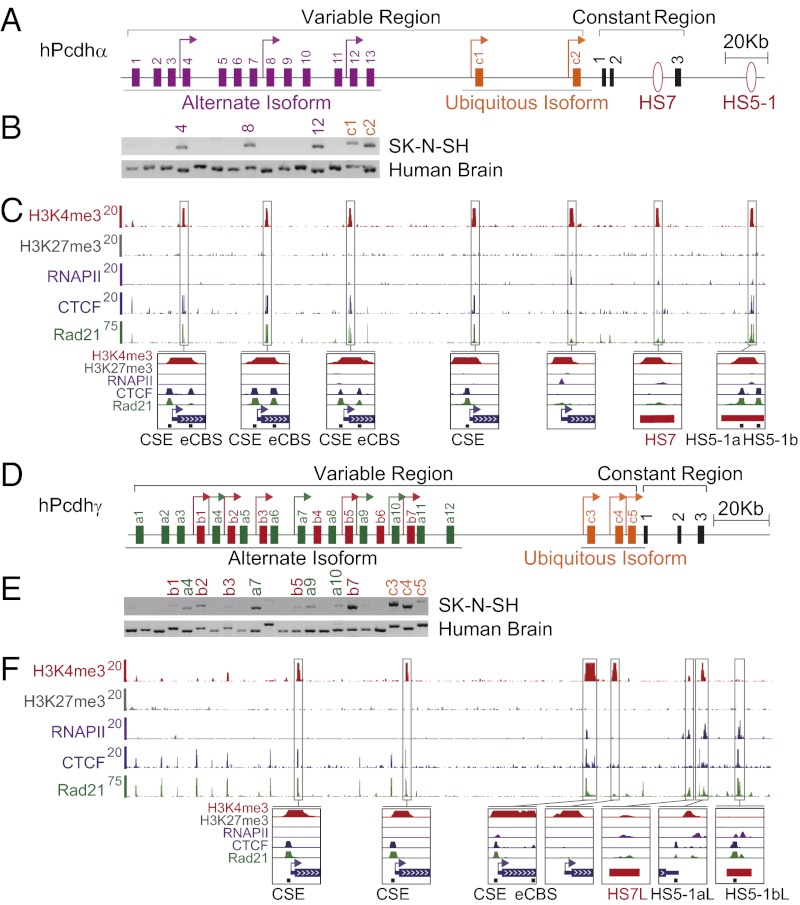Fig. 1.
SK-N-SH cells as a model system for studying Pcdh promoter choice. (A) Organization of the human Pcdhα cluster. The variable regions encode 13 alternate isoforms (purple) and 2 c-type ubiquitous isoforms (yellow). (B) Expression patterns of three alternate isoforms (α4, α8, and α12) and the two c-type ubiquitous isoforms (αc1 and αc2) in SK-N-SH cells. The location of chromatin marks (H3K4me3 and H3K27me3), and binding of RNAPII, CTCF, and Rad21 in the Pcdh α (C) and γ (F) clusters in SK-N-SH cells. (D) Organization of the human Pcdhγ cluster. The variable region encodes 19 alternate isoforms, which are subdivided into two groups of 12 a-type (γa1 to γa12) (green), 7 b-type (γb1 to γb7) (red), and 3 c-type ubiquitous isoforms (γc3 to γc5) (yellow). (E) Expression patterns of alternate isoforms (γb1, γa4, γb2, γb3, γa7, γb5, γa9, γa10, and γb7) and the three c-type ubiquitous isoforms (γc3, γc4, and γc5) in SK-N-SH cells. Arrow, active promoter.

